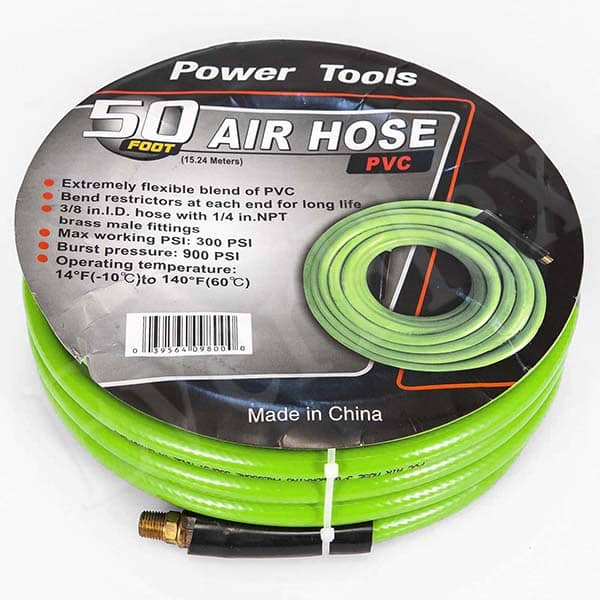Raw material preparation
Select suitable rubber, plastic and fiber reinforced materials as the main raw materials. Rubber usually uses nitrile rubber, chloroprene rubber, etc. to provide flexibility and corrosion resistance. Plastics such as nylon and polyethylene can enhance the strength and stability of the hose. Fiber-reinforced materials include polyester fibers, etc., which can improve the pressure resistance of the hose.
According to product requirements, various raw materials are mixed in a certain proportion and pre-processed. For example, rubber is plasticized and mixed to make the rubber have good plasticity and processing properties. At the same time, the fiber material is surface treated to enhance the bonding force with rubber or plastic.
Inner layer extrusion
Use an extruder to extrude the pretreated rubber or plastic raw materials into a tube to form the inner layer of the air hose. During the extrusion process, parameters such as temperature, pressure and extrusion speed must be strictly controlled. Ensure that the inner layer wall thickness is uniform, the surface is smooth, and has good physical properties.
Reinforcement layer laying
The prepared fiber-reinforced materials, such as woven polyester fiber mesh or wound steel wire, are laid on the inner layer surface according to a certain process method. Common methods include weaving and winding.
The weaving method is to weave the fiber material on the inner layer at a certain angle and density through a weaving machine to form a tight reinforcement structure. The winding method is to spirally wind the fiber material or steel wire on the inner layer, and control the spacing and tension of the winding to make the reinforcement layer have a uniform strength distribution.
Outer layer extrusion
After the reinforcement layer is laid, the rubber or plastic raw material is extruded again by the extruder, covering the surface of the reinforcement layer to form the outer layer of the air hose. The function of the outer layer is to protect the reinforcement layer and the inner layer from the influence of the external environment. At the same time, it provides good wear resistance and weather resistance.

Similarly, when extruding the outer layer, the process parameters need to be precisely controlled. Some anti-aging agents, ultraviolet absorbers, etc. can also be added to the outer layer to extend the service life of the hose.
Vulcanization or cross-linking treatment
For rubber air hoses, vulcanization treatment is usually required. Vulcanization is to make the rubber molecules undergo cross-linking reaction under a certain temperature and pressure to form a three-dimensional network structure. Then improve the strength, elasticity, wear resistance and aging resistance of the rubber.







